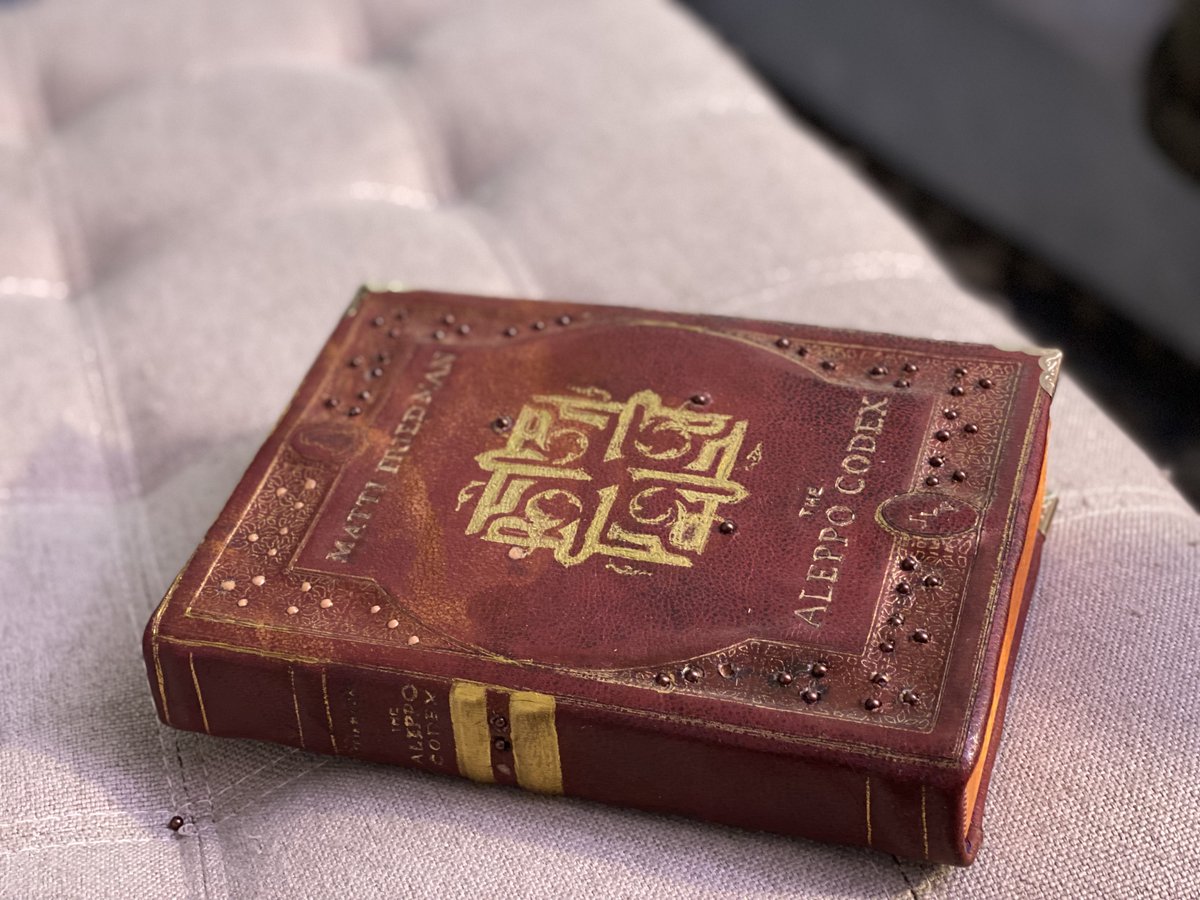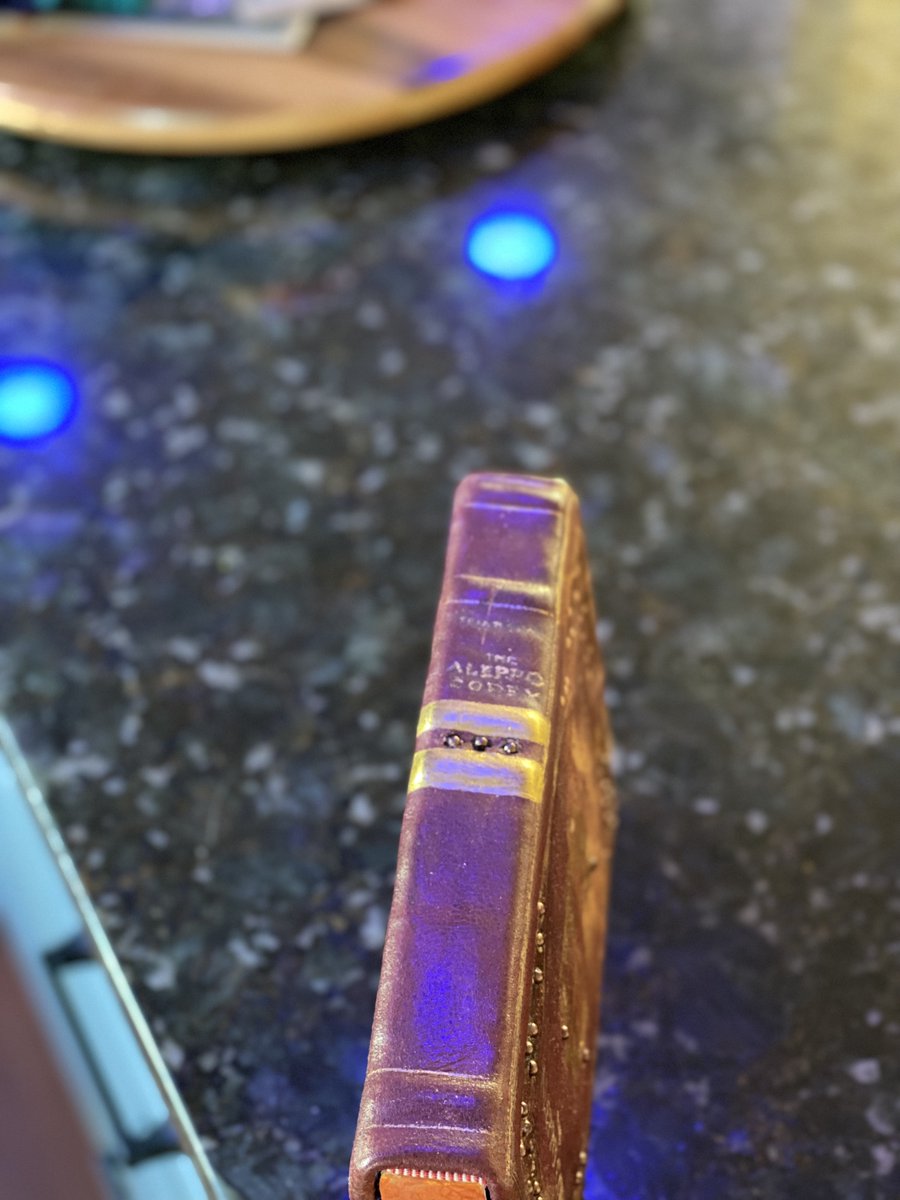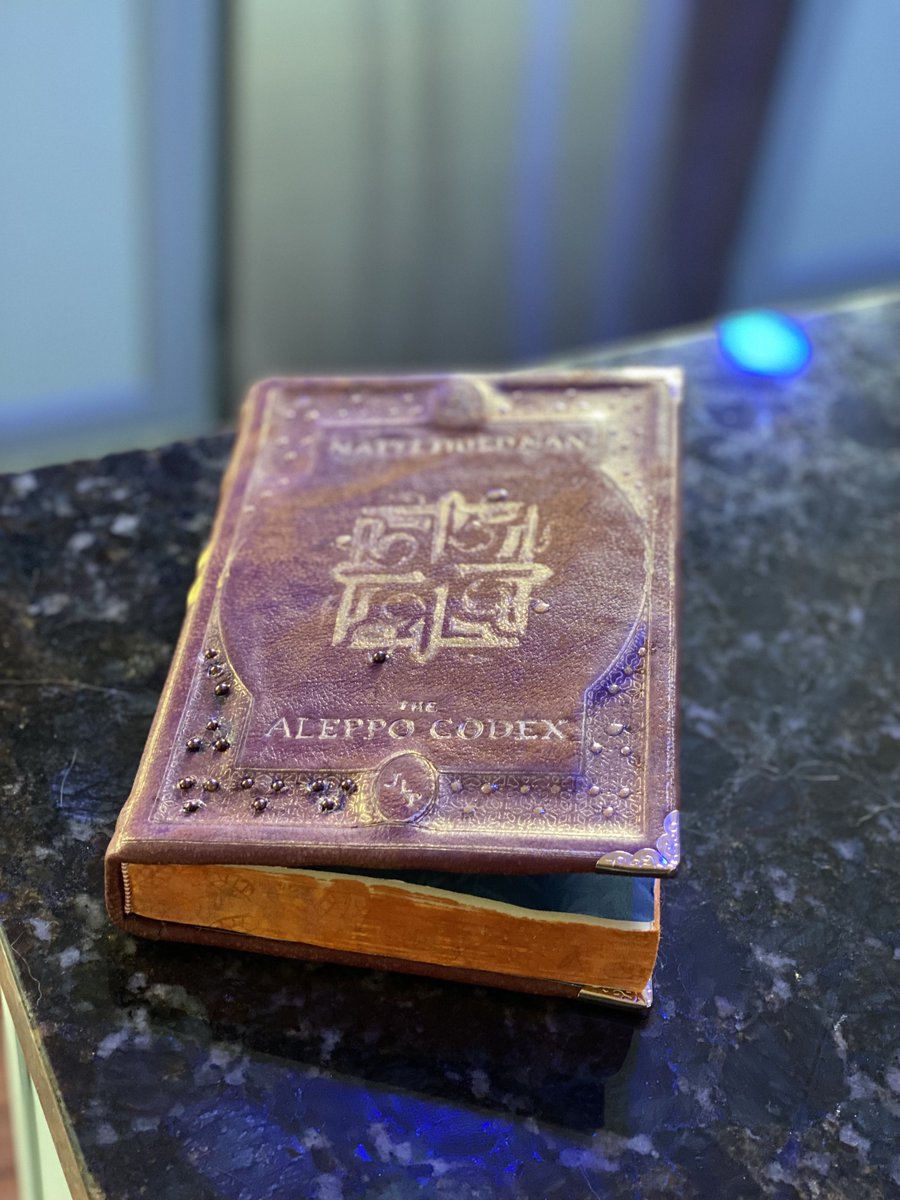Paperback-to-hardcover bookbinding project is almost done. Have a bunch of old paperbacks that I love and are falling apart, but I decided to do a trial run on a random book from my collection that is easily replaceable if it didn't work out. 

Did some autumnal edge-gilding to start. I ended up not being super-happy with it--it's too casual/modern--but those were the stamps I had available at the time. I got some Victorian embellishments for the future. 

Took off the cover, which was the scariest part because the spine glue was pretty cheap and fragile. 

Got some gorgeous leather from @TanneryNyc and some contrasting end papers. 

The only problem was the leather I wanted didn't come in a big enough piece, so I had to do the front and spine together and then join them to the back cover, which was a bit tricky.
I glued on the endpapers and used my Cricut to cut some chipboard covers and pieces to make the covers 3d. 

From this experience, I learned that the Cricut's chipboard-cutting capabilities are only so-so. Housemate has a laser cutter, which I think I will ask to borrow next time. 

I also used the Cricut to engrave the leather, thinking I would then use my pyrography pen to burn in the major lines on the cover to give it more dimension, and then gild on the top of it.
I have learned that gilding doesn't stick as well to burned leather.
I have learned that gilding doesn't stick as well to burned leather.

I used the Cricut's foiling tool to do gold foil on the cover. Unfortunately, at the time I didn't know Cricut made bigger foiling sheets, so I was using the small ones, and the foiling didn't take where they were taped down. Plus, as you can sorta see in this pic... 

I sort of stretched the leather downward when I was sticking it to the mat, so the patterns ended up not lining up. (You can see it on the title--basically I made the pattern on the leather too long by stretching it, compared to the original the Cricut was working from.)
So I ended up hand-lettering with some liquid gilding. I used a foiling pen to fill in the pattern in the center.
Unfortunately, all three golds are slightly different shades. :-/ It was also hard to fill in the pattern with the foiling pen, so there are gaps.
Unfortunately, all three golds are slightly different shades. :-/ It was also hard to fill in the pattern with the foiling pen, so there are gaps.

Then, on to the exciting part, gluing the leather to the chipboard covers and spine. I didn't believe that basic Elmer's glue would hold the leather to cardboard, so at first, I used superglue around the edges. 

As it turns out, my instincts were completely wrong. Normal, schoolkid glue forms a nice tight bond between the leather and chipboard, even when it's dimensional, and superglue just peels off. I don't understand glue. 

I had done resin "pearls" on the lattice pattern in the depressions, but I didn't like how that turned out (it was hard to make them consistent in size) so I used a tool I have no idea what it does or where it came from to dig them out and put in actual pearl-beads instead. 

So, this is where we are now. I'm finishing up the pearls, I have to do gilding details on the lioness at the top, and I'm putting on a leather polish. 

You can sort of see the line where I've done the polish on the bottom but not the top. It actually changes the color a bit, most notably on the distressed areas--before polish, they're light tan; after, they're dark brown. 

Oh, and I made the join between the pieces of leather along a frame-line on the back cover. It's definitely noticeable, but I don't think it's too bad. 

If I were doing it over again, I'd probably add an ornament on the blank spot on the spine, but I'm pretty happy with this as a first effort. 

Anyway, there are a lot of bits of it that are sloppy, but it's ended up looking sort of weathered/old so they don't bother me that much, and I kind of like that it looks old.
Next up, Tal Ilan's book on women in Second Temple Judaism, for which I think I have a cool idea.
Next up, Tal Ilan's book on women in Second Temple Judaism, for which I think I have a cool idea.

• • •
Missing some Tweet in this thread? You can try to
force a refresh




